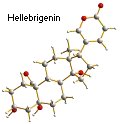My good friend Stu Borman and his colleagues at Chemical & Engineering News (C&EN) have come up with a fascinating mash up of the most important chemical discoveries of 2006.
First up, is the total synthesis of UCS1025A, this esoteric-sounding compound is actually a potential inhibitor of the enzyme telomerase, and the incredibly compact synthesis was achieved by Tristan Lambert and Samuel Danishefsky of the Sloan-Kettering Institute for Cancer Research and Columbia University (J. Am. Chem. Soc. 2006, 128, 426). Inhibiting this enzyme could retard the growth of tumours.
Another synthesis published in JACS is second in Stu’s list. The scheme comes from Elias J. Corey’s group at Harvard University and represents a cheaper and faster way to construct the flu drug oseltamivir phosphate, better known as Roche’s antiviral Tamiflu (J. Am. Chem. Soc. 2006, 128, 6310).
Another synthetic achievement this year is the construction of the compound 2-quinuclidone by Brian Stoltz and Kousuke Tani at California Institute of Technology (Nature 2006, 441, 731). A quick glance at this simple-seeming structure might have you reaching for your Merck Index thinking that surely it must have been synthesised decades ago. But, no, this is the first synthesis of this bicyclic. Their synthetic scheme may provide new insights into biological amide hydrolysis as well as representing a rather aesthetically pleasing synthesis.
You can read about the other syntheses picked out by Borman and his colleagues in C&EN.
Also on their list is research at the frontiers of carbohydrate chemistry, where researchers have developed a high-throughput technique for screening mutant glycosyltransferases (GTs) for biomedical activity. The work could lead to a new generation of designer sugars for a range of medical conditions. Advances in structural biology (chemistry by any other name) achieved Nobel status this year, and crystallography also produced some amazing results in revealing the structure of Dicer, an enzyme that initiates RNA interference (RNAi). Also in this field a new NMR technique, SAIL, on which I reported for SpectroscopyNOW earlier in the year, could revolutionize solution structure determination of proteins.
Molecular biology (also chemistry by another name) features in Borman’s round-up with researchers gaining important insights into the molecular mechanisms of cellular protein production, Alzheimer’s disease, and RNA interference.
In the field of analytical chemistry, a new approach to nanoscale secondary ion mass spectrometry (nanoSIMS) was developed for imaging lipid bilayers at below 100 nm resolution and computational chemistry produced a 3000-member family of artificial cytochrome P450 enzymes for studying how these enzymes metabolize drugs and toxins.
In inorganic chemistry, says Borman, researchers produced previously elusive molecules and atoms, such as P2. Nuclear, polymer, and space chemistry also feature in this year’s round-up as does nanotechnology, not surprisingly.
But, one highlight of the chemical year not mentioned in C&EN, but certainly on my list was the culmination of work at a small laboratory in Northern Ireland that has led to the maturation of work I first wrote about for New Scientist back in the early 1990s and that has now, in its teens, reached a level of application its detractors said could never be – AP de Silva’s research on molecular logic.




 Our sense of smell is much better than we give it credit for. A report in Nature Neuroscience puts paid to the notion that the human reputation for having a poor sense of smell compared to other animals.
Our sense of smell is much better than we give it credit for. A report in Nature Neuroscience puts paid to the notion that the human reputation for having a poor sense of smell compared to other animals. The environmental costs of dealing with waste products from old electrical goods will have to be met by the device manufacturers in Europe from July 2007.
The environmental costs of dealing with waste products from old electrical goods will have to be met by the device manufacturers in Europe from July 2007.